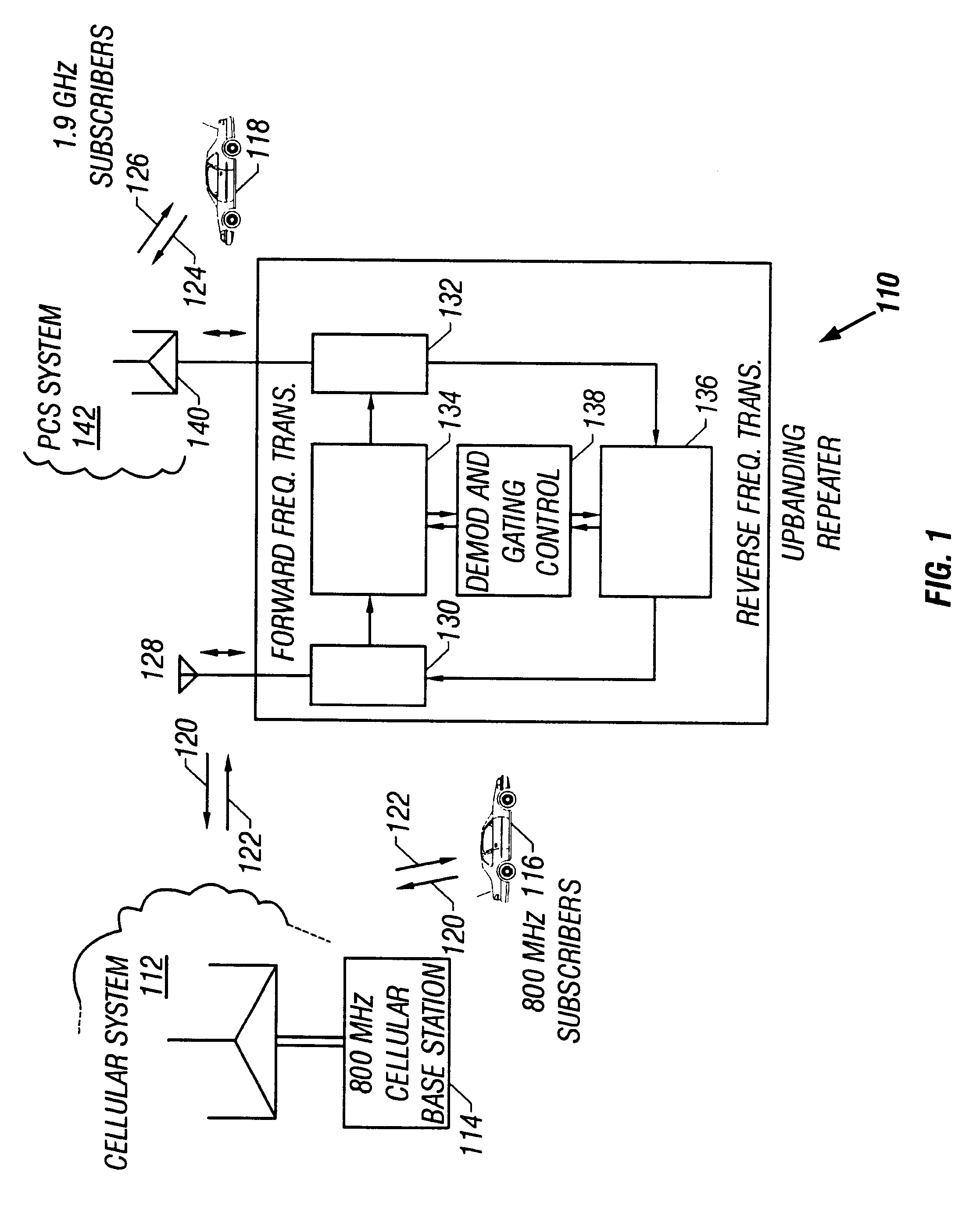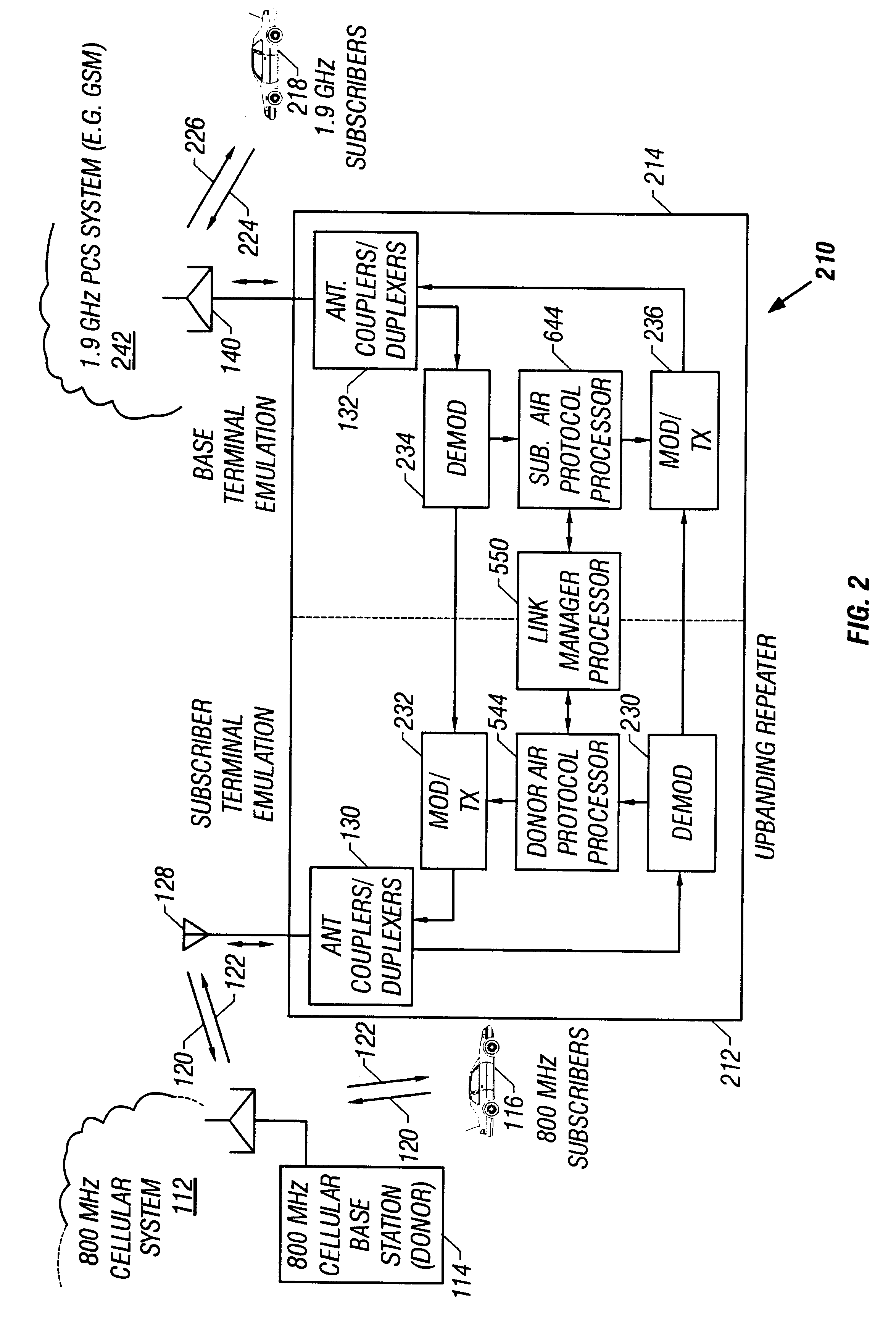Band-changing repeater with protocol or format conversion
a repeater and protocol technology, applied in the field of repeaters, can solve the problems of extremely limited capacity of systems deployed previously in the united states, high cost of service, and inability to realize mobile telephony
- Summary
- Abstract
- Description
- Claims
- Application Information
AI Technical Summary
Benefits of technology
Problems solved by technology
Method used
Image
Examples
Embodiment Construction
FIGS. 1-11 generally show preferred embodiments of a repeater constructed according to the present invention for allowing communications between terminals of first and second wireless communications systems, wherein the communications systems have non-identical air protocols or radio interfaces. Although the present invention is described in the exemplary environment of wireless communications systems typically used to provide mobile telephone service, the invention is broadly applicable to a wide variety of communications systems.
FIGS. 1 and 3-5 show a first preferred embodiment of a repeater constructed according to an aspect of the present invention, for use in applications in which the first and second communications systems operate in different frequency bands, but employ otherwise identical or compatible air protocols. FIGS. 2 and 6-11 show a second preferred embodiment of a repeater constructed according to another aspect of the present invention, for use in applications in w...
PUM
 Login to View More
Login to View More Abstract
Description
Claims
Application Information
 Login to View More
Login to View More - R&D
- Intellectual Property
- Life Sciences
- Materials
- Tech Scout
- Unparalleled Data Quality
- Higher Quality Content
- 60% Fewer Hallucinations
Browse by: Latest US Patents, China's latest patents, Technical Efficacy Thesaurus, Application Domain, Technology Topic, Popular Technical Reports.
© 2025 PatSnap. All rights reserved.Legal|Privacy policy|Modern Slavery Act Transparency Statement|Sitemap|About US| Contact US: help@patsnap.com



